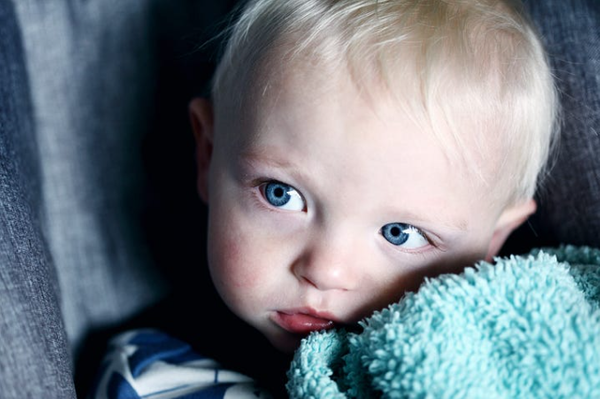Trauma & Shame: The Struggle is Real

How does toxic shame start? How does it become internalized and pervasive?
My clients find me because they are looking for help with their childhood trauma, and many don’t realized the depth of the toxic, pervasive shame that goes hand in hand with that. While I’ve written more in-depth articles on shame before, (see article Unshaming Shame) as it’s a huge part of what we show the world, and how we view ourselves, I haven’t done a bite-size article. This topic is vast and we seem to underestimate the power of this mysterious primary emotion, time and again.
When we are born, we have the cognition of shame. This is where it differs from guilt, as guilt is a secondary emotion, not a primary. In childhood, it takes one triggering event to bring the healthy emotion of shame to the center. Shame is meant to protect us, to keep us safe.

When you were little, maybe toddler age, you perhaps reached for something that the adult with you deemed was unsafe, such as the hot stove. This adult grabbed your hand back and said, “No! Don’t touch that!” Pretty standard for kiddos, yeah? In that moment though, shame rose up. You heard the tone of voice, saw the facial expression and body language, and the panic. Shame jumped up and said “Oh no, protection time!” You most likely started to cry and hopefully were comforted. Shame keeps us small and silent, to mitigate risk and keep us out of trouble where we could get hurt.
That sounds like a pretty great mechanism inside our bodies and minds, doesn’t it? Like a safety valve that gets flipped to try keep us alive. Amazing.
Now, that doesn’t speak to how it “feels,” because it’s so darn uncomfortable. Shame feels like we did something wrong and people outside of us are going to see and it’s bad bad bad, if they do. We can feel exposed and it’s uncomfortable.

In spite of how this “feels,” it’s really a beautiful thing to recognize that our bodies and brains use shame to help us stay safe. And, it’s healthy.
That being said, when we are little ones, growing up in dysfunction, healthy shame can turn toxic. It becomes the go-to mechanism and we will turn it inward, resulting in a loud, harsh and unrelenting inner critic who has lots to say and none of it is nurturing.
When healthy shame turns toxic, it’s purpose is to keep us small and silent so as to try to mitigate risk for repeated chronic, consistent trauma and abuse. As we grow up, this toxic shame doesn’t just go away. It is the guiding principle in all our parts and has to be addressed for healing to happen.
Toxic shame is about a person, not an event(s). When a child growing up in a healthy family, makes a mistake, the caregiver might say, “It’s just a mistake, we all make them, let’s clean it up together.” The child is not shamed and taught a valuable lesson; they get to be human, make mistakes, however they are not the sum-total of their mistakes.
When a child growing up in a dysfunctional environment makes a mistake, the caregiver may say, “You are so clumsy, stupid, how could you do that?” This moment is the break in attunement. Toxic shame has now been established. The child then takes those statements and internalizes them as “I am my mistakes.” Not, “I made a mistake.”

And, we know that shame, healthy or toxic, is a primary emotion and a nervous system freeze. If you are a science geek like me, understanding the nervous system piece with shame is vitally important. We feel shame in the body and have a cognitive label for it and the nervous system goes into fight, flight, freeze, fawn or flop, when it rises up in the body. Bottom up approach!
What does this look like in our adult life? I mean, hey, we are grown up, out of that home life where all the abuse happened, why am I not fixed, better, okay with who I am? Why do I question myself at best, and berate myself at worst?
You guessed it: because of the toxic shame. So the trauma(s) may have been addressed in therapy and/or trauma coaching, but if we miss working with the toxic shame piece, it will continue to rise up and attempt to protect you, by mitigating risk and keeping you small.
It looks like so many things. As toxic shame is pervasive, it affects our personal relationships, our professional life, parenting, choices we make, lifestyles we choose or don’t choose.
For example, in a professional setting it can look like perfectionism, self-sabotage, disorganization, and many other things. I created an infographic a while back for teaching: here is a clip of just some of the ways toxic shame manifests in our work-life.
The layers run deep for those of us with developmental trauma and toxic, pervasive shame. What I know to be true today, is that developmental abuse and attachment wounding is relational trauma and must be healed in the context of relationship. For toxic shame “pockets” as I like to call them with clients and students, it means we shine a gentle light on them and excavate the non-reality of the internal statements, re-shape and soften the events and the deeper meaning of “I couldn’t have done it differently.”
Is this easy work? No. Is it worth it? Absolutely.
Hoping you are taking good care of all your parts today, especially those with toxic shame. You deserve healing and nurturing.
